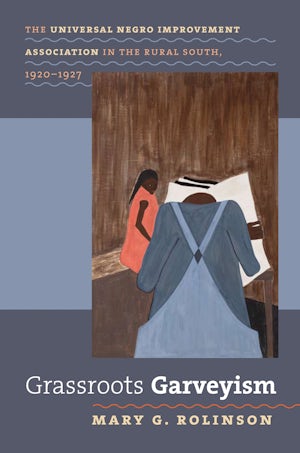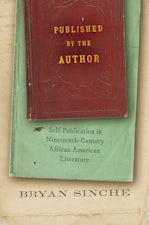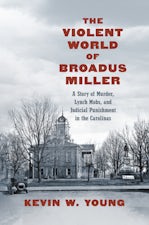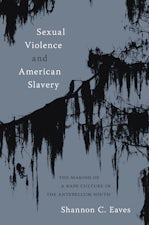Grassroots Garveyism
The Universal Negro Improvement Association in the Rural South, 1920-1927
By Mary G. Rolinson
304 pp., 6.125 x 9.25, 5 illus., 5 maps, 9 tables , appends., notes, bibl., index
-
Paperback ISBN: 978-0-8078-5795-3
Published: February 2007 -
E-book EPUB ISBN: 978-0-8078-7278-9
Published: February 2012 -
E-book PDF ISBN: 979-8-8908-7870-0
Published: February 2012
John Hope Franklin Series in African American History and Culture
Buy this Book
- Paperback $37.50
- E-Book $27.99
For Professors:
Free E-Exam Copies
Rolinson shows how Garvey’s southern constituency sprang from cities, countryside churches, and sharecropper cabins. Southern Garveyites adopted pertinent elements of the movement's ideology and developed strategies for community self-defense and self-determination. These southern African Americans maintained a spiritual attachment to their African identities and developed a fiercely racial nationalism, building on the rhetoric and experiences of black organizers from the nineteenth-century South. Garveyism provided a common bond during the upheaval of the Great Migration, Rolinson contends, and even after the UNIA had all but disappeared in the South in the 1930s, the movement's tenets of race organization, unity, and pride continued to flourish in other forms of black protest for generations.
About the Author
Mary G. Rolinson is lecturer of history at Georgia State University.
For more information about Mary G. Rolinson, visit
the
Author
Page.
Reviews
"Recommended."--CHOICE
"Offers fascinating glimpses into heretofore hidden corners of the Universal Negro Improvement Association. . . . A welcome addition to the Garvey literature."--American Historical Review
"Technically solid, with clear writing and organization, and would be ideal for classroom use with undergraduates. . . . Nicely balances more general social history with well-timed accounts from inside and outside the UNIA."--Historian
"In addition to providing a new angle to the historiography on Marcus Garvey, Rolinsons's monograph contributes another link in the black freedom struggle."--North Carolina Historical Review
"Not only shines much needed light on an overlooked segment of Garveyites but also illuminates the interior lives of rural black Southerners. . . . A welcome addition to the scholarship of Garveyism."--Arkansas Historical Quarterly
"Makes valuable contributions to our understanding of the Garvey movement and black Southern life, bringing gender analysis to bear on these topics in new and productive ways."--Journal of American Studies




